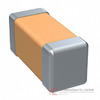Alle Kategorien
-
Integrierte schaltkreise (ICS)
Integrierte schaltkreise (ICS)
- Spezialisierte ICS(35707)
- PMIC-Spannungsregler-besonderer Zweck(1598)
- PMIC-Spannungsregler-lineare Regler(572)
- PMIC-Spannungsregler-linear + Switching(499)
- PMIC-Spannungsregler-linear(27467)
- PMIC-Spannungsregler-DC DC Switching Regulators(20868)
- PMIC-Regler-DC-DC-Switching-Controller(4728)
- PMIC-Spannungs-Referenz(2128)
- PMIC-v/f und f/v-Wandler(47)
- PMIC-Thermal Management(297)
- PMIC-Supervisor(17396)
- PMIC-RMS bis DC-Wandler(555)
- PMIC-Netzteil-Controller, Monitore(723)
- PMIC-Power over Ethernet (PoE) Controller(368)
- PMIC-Power Management-spezialisierte(2708)
- PMIC-Netzschalter, Treiber laden(1429)
- PMIC-PFC (Power Factor Correction)(320)
- PMIC oder Steuerungen, ideale Dioden(290)
- PMIC-Motor-Treiber, Regler(1166)
- PMIC-Beleuchtung, Ballast-Regler(1745)
- PMIC-LED-Treiber(11607)
- PMIC-Laser-Treiber(2349)
- PMIC-Hot-Swap-Controller(2468)
- PMIC-Gate-Treiber(5085)
- PMIC-voll, Half-Bridge-Treiber(364)
- PMIC-Energy Messung(2378)
- PMIC-Display-Treiber(4466)
- PMIC-derzeitige Regulierung/Management(732)
- PMIC-Batterie-Management(3519)
- PMIC-Ladegeräte(46080)
- PMIC-AC DC Konverter, Offline Schalter(21202)
- Memory-Controller(9982)
- Memory-Konfigurations-Proms für FPGAs(7695)
- Speicher-Akkus(130)
- Memory(19527)
- Memory(19527)
- Logic-universelle Bus-Funktionen(31014)
- Logic-Übersetzer, Level-Shifter(755)
- Logik-Specialty Logic(1916)
- Logik-Signal-Schalter, Multiplexer, Decoder(3447)
- Logic-Shift-Register(6058)
- Logic-Parity Generatoren und Checkers(6682)
- Logic-multivibratoren(1274)
- Logik-Latches(1535)
- Logik - Tore und Wechselrichter - Multifunktion, konfigurierbar(4223)
- Logik-Tore und Wechselrichter(5667)
- Logic-Flip Flops(7964)
- Logik-FIFOs Speicher(1236)
- Logik-Zähler, Trennlinien(3350)
- Logik-Vergleichsoperator(5892)
- Logik-Puffer, Treiber, Receiver, Transceiver(6630)
- Linear-Video-Verarbeitung(1075)
- Linear-Vergleichsoperator(2312)
- Linear-analoge Multiplikatoren, Trennwände(1237)
- Linear-Verstärker-Video Amps und Module(3822)
- Linear-Verstärker-Spezial-Zweck(3334)
- Linear - Verstärker - Instrumentierung, OP -Verstärker, Pufferverstärker(11463)
- Linear-Verstärker-Audio(971)
- Interface-Voice Record und Playback(634)
- Schnittstelle - UARTs (Universal Asynchronous Receivers -Sender)(133)
- Schnittstelle-Telecom(47636)
- Interface-spezialisierte(1301)
- Interface-Signal Terminatoren(2351)
- Interface-Signal-Puffer, Repeater, Splitter(1834)
- Interface-Serializer, Deserializer(7226)
- Schnittstellen-Sensor und Detektor-Interfaces(2321)
- Interface-Module(230)
- Interface-Modems-ICS und Module(668)
- Interface-e/a-Expander(2822)
- Interface-Filter-aktiv(1524)
- Interface-Encoder, Decoder, Konverter(11802)
- Interface-Treiber, Receiver, Transceiver(10390)
- Interface-Direct Digital Synthesis (DDS)(3471)
- Interface-Controller(3245)
- Interface-Codecs(583)
- Schnittstelle - Analoge Switches, Multiplexer, Demultiplexer(15690)
- Schnittstelle-analoge Schalter-spezieller Zweck(2961)
- Embedded-System on Chip (SoC)(6429)
- Embedded-PLDs (programmierbare Logik-Vorrichtung)(613)
- Embedded-Mikroprozessoren(5164)
- Embedded-Mikrocontroller-anwendungsspezifische(2091)
- Embedded-Mikrocontroller(59305)
- Eingebettet - Mikrocontroller, Mikroprozessor, FPGA -Module(4518)
- Eingebettet - FPGAs (Feldprogrammiergate -Array) mit Mikrocontrollern(557)
- Embedded-FPGAs (Field Programmable Gate Array)(7189)
- Embedded-DSP (Digital Signal Processors)(4650)
- Eingebettet - CPLDs (komplexe programmierbare Logikgeräte)(4971)
- Datenerfassung-Touch Screen Controller(596)
- Datenerfassung-Digital to Analog Converter (DAC)(5044)
- Datenerfassung-digitale Potentiometer(1879)
- Datenerfassung-analog zu Digital Converters (ADC)(5134)
- Datenerfassung-analoges Frontend (AFE)(227)
- Datenerfassung-MDE/DACs-spezieller Zweck(922)
- Clock/Timing-Uhren in Echtzeit(1372)
- Uhr/Timing - programmierbare Timer und Oszillatoren(1504)
- Clock/Timing-IC-Akkus(492)
- Takt/Timing-Delay Lines(16538)
- Uhr/Timing - Uhrengeneratoren, PLLS, Frequenzsynthesizer(20093)
- Clock/Timing-Clock Puffer, Treiber(3531)
- Clock/Timing-anwendungsspezifische(3433)
- Audio Spezial-Zweck(9718)
-
Diskrete Halbleiter-Produkte
Diskrete Halbleiter-Produkte
- Aktuelle Regulierung - Dioden, Transistoren(775)
- Transistoren-besonderer Zweck(64)
- Transistoren-programmierbare Unijunction(1584)
- Transistoren-jfets(1690)
- Transistoren-IGBTs-Einzel(6032)
- Transistoren-IGBTs-Module(1087)
- Transistoren-IGBTs-Arrays(9)
- Transistoren-FETs, MOSFETs-Einzel(16037)
- Transistoren-FETs, MOSFETs-RF(3251)
- Transistoren-FETs, MOSFETs-Arrays(6376)
- Transistoren-Bipolar (BJT)-einzeln, Pre-biased(4478)
- Transistoren-Bipolar (BJT)-Einzel(12624)
- Transistoren-Bipolar (BJT)-RF(488)
- Transistoren-bipolare (BJT)-Arrays, Pre-biased(6311)
- Transistoren-bipolare (BJT)-Arrays(1394)
- Thyristor-triacs(1128)
- Thyristoren-SCRs-Module(1141)
- Thyristoren-SCRs(2752)
- Thyristoren-diacs, sidacs(164)
- Power Driver Module(4744)
- Dioden-zenerdioden-Einzel(43480)
- Dioden-zenerdioden-Arrays(113195)
- Dioden - variable Kapazität (Varik, Varaktoren)(718)
- Dioden-RF(1765)
- Dioden-Gleichrichter-Einzel(31894)
- Dioden-Gleichrichter-Arrays(8627)
- Dioden-Brücke-Gleichrichter(20238)
-
RF/if und RFID
RF/if und RFID
- SIM -Karten für Abonnenten -Identifikationsmodul (SIM)(41)
- RF -Zirkulatoren und Isolatoren(1721)
- RFID Zubehör(350)
- HF-Zubehör(2025)
- RFID, RF-Zugang, Monitoring-ICS(4567)
- RFID Transponder, Tags(240)
- RFID Lesegeräte(1877)
- RFID Evaluation und Development Kits, Boards(67)
- RFID Evaluation und Development Kits, Boards(67)
- RFID Antennen(696)
- RFI und EMI - Abschirm- und Absorbungsmaterialien(8538)
- HF und EMI-Kontakte, Fingerstock und Dichtungen(4004)
- RF Transmitter(1179)
- RF Transceiver Module(4056)
- RF-Transceiver ICS(1553)
- HF-Schalter(8107)
- RF Shields(4991)
- HF-Receiver(639)
- HF -Empfänger, Sender und Transceiver -Einheiten(3515)
- RF Power Divider/Splitter(4268)
- RF Power Controller ICs(595)
- HF-Modulatoren(3958)
- HF-Mixer(4622)
- RF misc ICS und Module(2738)
- HF-Front-End (LNA + PA)(11681)
- HF Evaluation und Development Kits, Boards(1994)
- HF Evaluation und Development Kits, Boards(1994)
- HF-gerichtete Kupplung(2963)
- RF Diplexer(1406)
- RF-Detektoren(175)
- RF-Demodulatoren(256)
- HF-Antennen(7488)
- HF-Verstärker(17487)
- Balun(706)
- Dämpfungsglieder(3204)
-
Optoelektronik
Optoelektronik
- Optomechanisch(338)
- Leuchten(125)
- Laserdioden, Lasermodule - Laserlieferung, Laserfasern(325)
- Hene Lasersysteme(24)
- Hene Lasersystemzubehör(9)
- Hene Laserköpfe(16)
- Hintergrundbeleuchtung anzeigen(31)
- Laserdioden, Module - Zubehör(36)
- Zubehör(42476)
- Zubehör(42476)
- Xenon-Beleuchtung(549)
- Touchscreen-Overlays(249048)
- Panel Indicators, Pilot Lights(47475)
- Optik-Remote-Phosphor-Lichtquelle(2771)
- Optik-Reflektoren(145)
- Optik-leichte Rohre(3353)
- Optik-Objektive(15458)
- LEDs-Spacer, Unentschieden(433)
- LEDs-Lamp-Ersetzungen(24316)
- LEDs - Leiterplattenindikatoren, Arrays, Lichtstäbe, Balkendiagramme(1922)
- LED-thermische Produkte(6703)
- LED-Beleuchtung(39)
- LED-Beleuchtung-weiß(13461)
- LED-Beleuchtung-Farbe(2210)
- LED-Beleuchtung-Maiskolben, Motoren, Module(9508)
- LED-Anzeige-diskret(10227)
- Laserdioden, Module(1345)
- Lampen-Glühlampen, Neons(338506)
- Lampen-Kälte-Fluoreszenz (KKL) & UV(349)
- Wechselrichter(7962)
- Infrarot, UV, sichtbare Strahler(3759)
- Fiber Optics-Transmitter-Antrieb integriert(3523)
- Fiber Optics-Transmitter-diskrete(2743)
- Fiber Optics-Transceiver Module(22925)
- Fiberoptik-Switches, Multiplexer, Demultiplexer(8234)
- Fiberoptik-Receiver(853)
- Fiberoptik-Dämpfung(394)
- Elektrolumineszenz(24758)
- Display, Monitor-Interface Controller(2642)
- Display-Module-Vakuum-Leuchtstofflampen (VFD)(19327)
- Module anzeigen-LED Dot Matrix und Cluster(17654)
- Display-Module-LED-Zeichen und numerische(2162)
- Display-Module-LCD, OLED, Graphic(3487)
- Display-Module-LCD, OLED-Zeichen und numerische(790)
- Display-Blenden, Objektive(288)
- Adresse, Spezialität(2442)
-
Sensoren, Wandler
Sensoren, Wandler
- Ultraschallempfänger, Sender - Industrial(115)
- Temperatursensoren - Thermostate - Mechanisch - Industrielles(1270)
- Temperatursensoren - Analog und digitaler Ausgang - Industrial(169)
- Näherungssensoren - Industrial(7143)
- Drucksensoren, Wandler - Industrie(1835)
- Optische Sensoren - Photonik - Zähler, Detektoren, SPCM (Einzelphotonzählmodul)(726)
- Optische Sensoren - Kameramodule(776)
- Magnetsensoren - Position, Nähe, Geschwindigkeit (Module) - Industrie(138)
- Kraftsensoren - Industrial(265)
- Flusssensoren - Industrielles(137)
- Float, Level Sensoren - Industrial(172)
- Encoder - Industrial(2217)
- Farbsensoren - Industrial(20)
- Berührungssensoren(63)
- Messkabel-Zubehör(2553)
- Zubehör(4528)
- Zubehör(4528)
- Ultraschall-Receiver, Transmitter(986)
- Temperatursensoren-Thermostat-Solid State(333)
- Temperatursensoren-Thermostate-mechanisch(4379)
- Temperatursensoren - Thermoelemente, Temperatursonden(1770)
- Temperatursensoren - RTD (Widerstandstemperaturdetektor)(1653)
- Temperatursensoren-PTC-Thermistoren(2026)
- Temperatursensoren-ntc-thermistoren(7932)
- Temperatursensoren-Analog und Digital Output(2963)
- DMS(1886)
- Spezialisierte Sensoren(3142)
- Solarzellen(688)
- Schock-Sensoren(317)
- Sensor-Interface-Junction-Blöcke(2156)
- Sensor-Kabel-Baugruppen(26522)
- Proximity/Belegung Sensoren-fertige Einheiten(902)
- Näherungsschalter(3322)
- Drucksensoren, Wandler(10275)
- Positionssensoren - Winkel, lineare Positionsmessung(3882)
- Optische Sensoren-reflektierende-Logik-Ausgang(1471)
- Optische Sensoren - reflektierend - analoge Ausgang(1258)
- Optische Sensoren-Phototransistoren(1032)
- Optische Sensoren - Photointerrupter - Schlitztyp - Transistorausgang(513)
- Optische Sensoren - Photointerrupter - Schlitztyp - Logikausgabe(559)
- Optische Sensoren-Lichtschranke, Industrial(12132)
- Optische Sensoren-Photodioden(3168)
- Optische Sensoren-Foto-Detektoren-Remote Receiver(1350)
- Optische Sensoren-Foto-Detektoren-Logik-Ausgang(339)
- Optische Sensoren-Foto-Detektoren-CDs-Zellen(717)
- Optische Sensoren-Maus(1297)
- Optische Sensoren-Distanz-Messung(1412)
- Optische Sensoren-Ambient Light, IR, UV Sensoren(10243)
- Multifunktions(1418)
- Motion Sensors-Vibration(1680)
- Motion Sensors-Tilt Schalter(159)
- Bewegungsmelder-optisch(347)
- Motion Sensors-Neigungssensoren(102)
- Motion Sensors-Imus (Trägheit-Maßeinheiten)(298)
- Motion Sensors-Kreisel(702)
- Motion Sensors-Beschleunigungsmesser(764)
- Magnete-Sensor abgestimmt(152)
- Magnete-Multi Purpose(1871)
- Magnetische Sensoren-Schalter (Solid State)(1519)
- Magnetsensoren - Position, Nähe, Geschwindigkeit (Module)(2148)
- Magnetische Sensoren-linear, Kompass (ICS)(698)
- Magnetsensoren - Kompass, Magnetfeld (Module)(178)
- LVDT -Wandler (linearer variabler Differentialtransformator)(1451)
- IrDA Transceiver-Module(77)
- Bildsensor, Kamera(1272)
- Feuchtigkeit-Sensoren(3880)
- Gas-Sensoren(4294)
- Force Sensoren(1023)
- Durchfluss-Sensoren(440)
- Float, Level Sensoren(634)
- Flex-Sensoren(157)
- Encoder(3440)
- Staub-Sensoren(388)
- Aktuelle Wandler(2256)
- Color Sensoren(49)
- Schnittstelle - Sensor, kapazitive Berührung(356)
- Verstärker(2000)
- Verstärker(2000)
-
Anschlüsse, Verbindungen
Anschlüsse, Verbindungen
- Stecker und Behälter(1710)
- USB, DVI, HDMI Stecker-Zubehör(94)
- Klemmen-Zubehör(113)
- Anschlussblöcke-Zubehör-Draht-Beschläge(1061)
- Anschlussblöcke-Zubehör-Marker-Streifen(4696)
- Anschlussblöcke-Zubehör-Jumper(1477)
- Anschlussblöcke-Zubehör(3886)
- Solid State Lighting Steckverbinder-Zubehör(96)
- Buchsen für ICS, Transistoren-Zubehör(71)
- Rechteckige Steckverbinder-Zubehör(2950)
- Rechteckig-Platine-Stecker-Zubehör(1)
- Power Entry Steckverbinder-Zubehör(329)
- Austauschbare Steckverbinder-Zubehör(204)
- Photovoltaik (Solarpanel) Stecker - Zubehör(99)
- Modulare Anschlüsse - Kabelblöcke - Zubehör(22)
- Modulare Steckverbinder-Zubehör(276)
- Memory Steckverbinder-Zubehör(57)
- Keystone-Zubehör(357)
- Heavy Duty Steckverbinder-Zubehör(1081)
- LWL-Steckverbinder - Zubehör(349)
- FFC, FPC (flache flexible) Steckverbinder - Zubehör(8)
- D -Sub, D -förmige Steckverbinder - Zubehör - JackScrews(830)
- D-Sub, d-förmige Steckverbinder-Zubehör(1168)
- Koaxial Verbinder (RF)-Zubehör(1017)
- Rundsteckverbinder-Zubehör(48982)
- Card Edge Steckverbinder-Zubehör(99)
- Blade Type Power Connectors-Zubehör(670)
- Fass-Zubehör(74)
- Banana and Tip Steckverbinder-Zubehör(25)
- Backplane Steckverbinder-Zubehör(693)
- USB, DVI, HDMI Stecker-Adapter(45761)
- USB, DVI, HDMI Stecker(3377)
- USB, DVI, HDMI Stecker(3377)
- Klemmen-Wire to Board Steckverbinder(1604)
- Klemmen-Draht-Steckverbinder(40747)
- Klemmen-Draht-Pin Stecker(12531)
- Terminals-Revolver Steckverbinder(5553)
- Terminals-spezialisierte Steckverbinder(1300)
- Klemmen-Spaten Verbinder(1381)
- Klemmen-Löten/Stecker(2577)
- Klemmen-Verschraubungen(1980)
- Klemmen-Ring Steckverbinder(6682)
- Klemmen-rechteckige Steckverbinder(3878)
- Terminals - Schnellverbindungen, schnelle Trennungsanschlüsse(4695)
- Klemmen-PC PIN, Single Post Connectors(2149)
- Klemmen-PC-Pin-Buchsen, Sockel-Steckverbinder(2222)
- Klemmen-magnetische Draht-Steckverbinder(3357)
- Klemmen-Messer Steckverbinder(3829)
- Klemmen-Gehäuse, Stiefel(1891)
- Klemmen-Folie Steckverbinder(662)
- Klemmen-Barrel, Bullet-Steckverbinder(5430)
- Klemmen-Adapter(713)
- Terminal-Streifen und Revolver-Boards(11368)
- Terminal Junction Systeme(3288)
- Anschlussblöcke-Draht an Bord(19352)
- Terminal Blocks-spezialisierte(2960)
- Terminal Blocks-Power Distribution(499)
- Anschlussblöcke-Panel Mount(522)
- Terminal Blocks-Interface Module(1639)
- Anschlussblöcke-Kopfzeilen, Stecker und Buchsen(148192)
- Anschlussblöcke-DIN-Schiene, Kanal(10920)
- Anschlussblöcke-Kontakte(306247)
- Anschlussblöcke-Barrier Blocks(44736)
- Anschlussblöcke-Adapter(449)
- Solid State Lighting Verbinder-Kontakte(2509)
- Solid State Lighting Steckverbinder(2295)
- Solid State Lighting Steckverbinder(2295)
- Buchsen für ICS, Transistoren-Adapter(765)
- Buchsen für ICS, Transistoren(2223)
- Buchsen für ICS, Transistoren(2223)
- Shunts, Jumper(821)
- Rechteckige Verbinder-Feder geladen(8043)
- Rechteckige Steckverbinder-Gehäuse(28877)
- Rechteckige Verbinder-Kopfzeilen, Spezial-PIN(5397)
- Rechteckige Anschlüsse - Header, Gefäße, weibliche Sockel(23450)
- Rechteckige Verbinder-Kopfzeilen, männliche Pins(138439)
- Rechteckige Anschlüsse - kostenloses Hängen, Panelhalterung(15074)
- Rechteckige Verbinder-Kontakte(5477)
- Rechteckige Anschlüsse - Board in, Direktdraht zum Board(2459)
- Rechteckige Verbinder-Adapter(251)
- Rechteckig - Brett zu Board -Steckern - Header, Behälter, weibliche Sockel(2982)
- Rechteckig - Brett zu Board -Steckern - Header, männliche Stifte(239)
- Rechteckige Anschlüsse - Board -Abstandshalter, Stacker (Board zu Board)(27782)
- Rechteckige Anschlüsse - Arrays, Kantentyp, Mezzanin (Board zu Board)(14186)
- Stromanschluss-Eingänge, Steckdosen, Module(4831)
- Austauschbare Steckverbinder(5229)
- Austauschbare Steckverbinder(5229)
- Photovoltaik- (Solarpanel) Anschlüsse - Kontakte(69363)
- Photovoltaik (Solar Panel) Steckverbinder(365)
- Photovoltaik (Solar Panel) Steckverbinder(365)
- Modulare Steckverbinder-Verdrahtung Blöcke(653)
- Modulare Steckverbinder-Stecker(2164)
- Modulare Steckverbinder-Stecker Gehäuse(3582)
- Modulare Steckverbinder-Buchsen mit magnetischen(4193)
- Modulare Steckverbinder-Buchsen(15464)
- Modulare Steckverbinder-Adapter(503)
- Memory Connectors-PC Cards-Adapter(859)
- Memory Connectors-PC Card Sockets(1904)
- Memory Connectors-Inline Modul Sockets(2493)
- LGH Steckverbinder(1057)
- Keystone-Einsätze(8467)
- Keystone-Frontplatte, Frames(19410)
- Heavy Duty Steckverbinder-Einsätze, Module(213354)
- Schwerlastanschlüsse - Gehäuse, Kapuzen, Basen(449460)
- Heavy Duty Steckverbinder-Frames(16851)
- Heavy Duty Steckverbinder-Kontakte(6325)
- Heavy Duty Steckverbinder-Baugruppen(1730)
- LWL-Steckverbinder-Gehäuse(4852)
- Glasfaser-Steckverbinder - Adapter(2754)
- LWL-Steckverbinder(215502)
- FFC, FPC (flache flexible) Steckverbinder - Gehäuse(30189)
- FFC, FPC (flache flexible) Anschlüsse - Kontakte(114)
- FFC, FPC (flache flexible) Steckverbinder(12920)
- FFC, FPC (flache flexible) Steckverbinder(12920)
- D-Sub, d-förmige Steckverbinder-Terminatoren(640)
- D-Sub, d-förmige Steckverbinder-Gehäuse(12383)
- D-Sub, d-förmige Steckverbinder-Kontakte(1350)
- D-Sub, D-förmige Steckverbinder-Rückenschalen, Kapuzen(3078)
- D-Sub, d-förmige Steckverbinder-Adapter(976)
- D-Sub Steckverbinder(106471)
- D-förmige Steckverbinder-Centronics(6037)
- Kontakte, Frühling geladen und Druck(7921)
- Kontakte-Multi Purpose(16222)
- Kontakte-"Leadframe"(572)
- Koaxial-Steckverbinder (RF)-Terminatoren(1374)
- Koaxial-Steckverbinder (RF)-Kontakte(279)
- Koaxial-Steckverbinder (RF)-Adapter(5909)
- Koaxial-Steckverbinder (RF)(16068)
- Koaxial-Steckverbinder (RF)(16068)
- Rundsteckverbinder-Gehäuse(221760)
- Rundsteckverbinder-Kontakte(3377)
- Rundsteckverbinder-backschalen und Kabel-Klemmen(44820)
- Rundsteckverbinder-Adapter(7708)
- Rundsteckverbinder(771637)
- Rundsteckverbinder(771637)
- Card Edge Steckverbinder-Gehäuse(577)
- Karte Edge Verbinder-edgeboard Verbinder(497865)
- Card Edge Verbinder-Kontakte(527)
- Card Edge Verbinder-Adapter(2752)
- Blade Type Power Steckverbinder-Gehäuse(2290)
- Blade Type Power Connectors-Kontakte(715)
- Blade-Typ-Stecker(2373)
- Blade-Typ-Stecker(2373)
- Zwischen Serien-Adapter(289)
- Barrel-Stromanschluss(399)
- Barrel-Audio-Anschlüsse(10808)
- Barrel-Audio Adapter(54)
- Banana und Tip Steckverbinder-Buchsen, Stecker(2046)
- Banana and Tip Connectors-Binding Posts(3219)
- Banana und Tip Steckverbinder-Adapter(647)
- Backplane Steckverbinder-spezialisiert(33926)
- Backplane Steckverbinder-Gehäuse(47465)
- Backplane Steckverbinder-Hard metrisch, Standard(7596)
- Backplane Steckverbinder-DIN 41612(4684)
- Backplane Steckverbinder-Kontakte(4419)
- Backplane Connectors-ARINC Einsätze(2322)
- Backplane Steckverbinder-ARINC(3305)
-
Widerstände
-
Kondensatoren
Kondensatoren
- Zubehör(50)
- Zubehör(50)
- Trimmer, Variable Kondensatoren(1088)
- Dünne Folien-Kondensatoren(1724)
- Tantal-Kondensatoren(79518)
- Tantal-Polymer-Kondensatoren(2486)
- Silizium-Kondensatoren(225)
- Niob Oxide Kondensatoren(128)
- Mica und PTFE Kondensatoren(908)
- Folien-Kondensatoren(89898)
- Elektrische Doppelschichtkondensatoren (EDLC), Superkondensatoren(1644)
- Keramische Kondensatoren(261123)
- Kondensatoren-Netzwerke, Arrays(740)
- Aluminium-Elektrolytkondensatoren(39501)
- Aluminium-Polymer-Kondensatoren(2396)
-
Transformatoren
Transformatoren
-
Isolatoren
-
Kristalle, Oszillatoren, Resonatoren
-
Switches
Switches
- Verriegelungsschalter(862)
- Emergency-Stop-Schalter (E-Stop)(752)
- Kabelzugschalter(353)
- Accessoires-Caps(1768)
- Zubehör-Stiefel, Dichtungen(106)
- Zubehör(11056)
- Zubehör(11056)
- Toggle-Schalter(18713)
- Rändelrads Schalter(1050)
- Schalter(9157)
- Snap-Aktion, Endschalter begrenzen(14916)
- Slide-Schalter(24680)
- Selector-Schalter(4460)
- Rotary Switches(5818)
- Rocker Schalter(60676)
- Drucktaste-Schalter-Hall-Effekt(3768)
- Drucktaste Schalter(29541)
- Programmierbare Display-Switches(13202)
- Navigations-Schalter, Joystick(14105)
- Magnetische, Reed-Schalter(604)
- Keypad-Schalter(168067)
- Keylock Schalter(1623)
- DIP Schalter(2977)
- Konfigurierbare Switch-Komponenten-Objektiv(1755)
- Konfigurierbare Schalter-Komponenten-Lichtquelle(1239)
- Konfigurierbare Switch-Komponenten-Contact Block(2781)
- Konfigurierbare Switch-Komponenten-Body(17732)
-
Relais
Relais
- Sicherheitsrelais(722)
- Reedrelais(484)
- Hochfrequenz (RF) -Relais(461)
- Schütze (Festkörper)(64)
- Schütze (elektromechanisch)(10945)
- Kfz-Relais(1280)
- Zubehör(2791)
- Zubehör(2791)
- Solid State Relais(3585)
- Signal-Relais, bis zu 2 Ampere(6811)
- Relay-Sockets(869)
- Power Relays, über 2 Ampere(369115)
- E / A-Relaismodule(593)
- I/o-Relay-Module-Input(30134)
- I/o-Relay-Module-Analog(438223)
- I/o-Relay-Modul-Racks(14318)
Sprache auswählen
Aktuelle Sprache
Deutsch
- English
- Deutsch
- Italia
- Français
- 日本語
- 한국의
- русский
- Svenska
- Nederland
- español
- Português
- polski
- Suomi
- Gaeilge
- Slovenská
- Slovenija
- Čeština
- Melayu
- Magyarország
- Hrvatska
- Dansk
- românesc
- Indonesia
- Ελλάδα
- Български език
- Afrikaans
- IsiXhosa
- isiZulu
- lietuvių
- Maori
- Kongeriket
- Монголулс
- O'zbek
- Tiếng Việt
- हिंदी
- اردو
- Kurdî
- Català
- Bosna
- Euskera
- العربية
- فارسی
- Corsa
- Chicheŵa
- עִבְרִית
- Latviešu
- Hausa
- Беларусь
- አማርኛ
- Republika e Shqipërisë
- Eesti Vabariik
- íslenska
- မြန်မာ
- Македонски
- Lëtzebuergesch
- საქართველო
- Cambodia
- Pilipino
- Azərbaycan
- ພາສາລາວ
- বাংলা ভাষার
- پښتو
- malaɡasʲ
- Кыргыз тили
- Ayiti
- Қазақша
- Samoa
- සිංහල
- ภาษาไทย
- Україна
- Kiswahili
- Cрпски
- Galego
- नेपाली
- Sesotho
- Тоҷикӣ
- Türk dili
- ગુજરાતી
- ಕನ್ನಡkannaḍa
- मराठी
Leitfaden zum Testen eines Varistors
Zeit: 2024/11/13
Durchsuchen: 2,084
Katalog
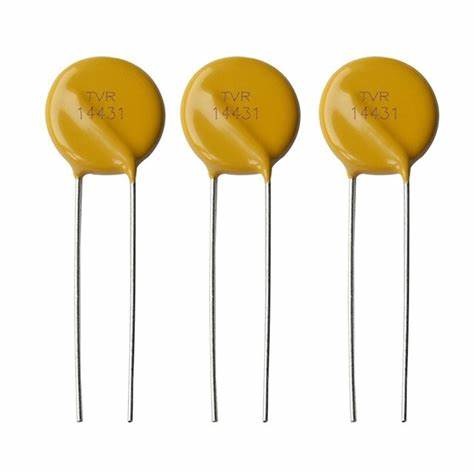
Erkundung des Varistors
Ein Varistor- oder Spannungs-abhängiger Widerstand (VDR) ist eine Halbleitervorrichtung, die elektronische Schaltungen vor Überspannungs- und transienten Spannungsspitzen schützt.Sein Widerstand variiert mit der darüber aufgetragenen Spannung.Varistor oder Spannungsabhängiger Widerstand ist eine Halbleitervorrichtung, mit der elektronische Schaltungen vor Überspannung oder transienten Spannungsereignissen geschützt werden.Der Widerstand in einem Varistor ändert sich in Reaktion auf die angelegte Spannung und macht es zu einer idealen Komponente zum Schutz der empfindlichen Elektronik vor Anspuren.
Verschiedene Arten von Varistoren
Varistoren fallen hauptsächlich in zwei Kategorien: Metalloxidvaristoren (MOVS) und Siliziumkarbidvaristoren (SICs).Movs, der häufigere Typ, besteht aus Metalloxiden wie Zinkoxid (ZnO) und Mangandioxid (MNO).Sie werden häufig verwendet, um vor Ereignissen wie Blitzeinschlägen vor elektrischen Anständen zu schützen.SICs bestehen aus Siliziumkarbid (SIC), die für seine Zähigkeit und Fähigkeit bekannt sind, hohen Temperaturen und Spannungen standzuhalten.Diese Varistoren schützen wirksam vor Überspannung durch elektrische Fehler oder Ausfälle.Varistoren werden üblicherweise in Unterhaltungselektronik integriert, einschließlich Fernseher, Computern und Smartphones sowie Rollen bei industriellen Steuerelementen, Telekommunikationen und Automobilsystemen.Sie werden in einer Vielzahl von Formen und Größen hergestellt, um bestimmte Anwendungen zu befriedigen.
Metalloxidvaristoren (MOVS)
Dies sind der häufigste Typ, hergestellt aus Materialien wie Zinkoxid und Mangandioxid.MOVs werden in Stromversorgern und Surge-Protektoren häufig verwendet, um Hochspannungsflächen zu absorbieren und zu zerstreuen, einschließlich solcher von Blitzschlägen oder Stromspitzen.
Siliziumkarbidvaristoren (SICs)
Diese Varistoren aus Siliziumcarbid sind für ihre hohe Ausfallspannung und ihre Widerstand gegen thermischen Schock bekannt.SICs werden hauptsächlich in industriellen Umgebungen eingesetzt, um Schaltkreise vor schweren Überspannungsereignissen zu schützen, wie beispielsweise solchen, die durch elektrische Fehler verursacht werden.Beide Typen finden Anwendungen über Unterhaltungselektronik, industrielle Steuerelemente und Telekommunikationen, die in verschiedenen Formen und Größen zugeschnitten sind, um den bestimmten Anforderungen zu entsprechen.
Wie funktionieren Varistoren?
Die Varistoren funktionieren durch Verringern ihres Widerstands, wenn die Spannung zunimmt, und machen sie ideal zum Schutz von Schaltkreisen vor Überspannung und vorübergehenden Ereignissen.In der Regel parallel zur Schaltung, die sie schützen, begrenzen die Varistoren den Stromfluss während der Spannungsspitzen und verhindern potenzielle Schäden an elektronischen Komponenten.Sie sind nützlich für den Blitzschutz, wenn mehrere Einheiten parallel verwendet werden, um überschüssige Strom von gefährdeten Geräten abzulenken.Zusätzlich zu Beleuchtungsereignissen bewachen die Varistoren auch gegen Spannungstransienten, die durch induktive Lasten oder Schaltungsversorgungen verursacht werden.Hier werden sie in Reihe platziert, sodass sie die Überschwemmungen absorbieren können, indem der Stromfluss durch den geschützten Schaltkreis während der Transienten reduziert wird.Die Wirksamkeit eines Varistors wird durch seine Klemmspannung bestimmt, die obere Spannung, die er standhalten kann, bevor sie abgebaut und kurzüberschreitet, geformt durch seine Materialien, Abmessungen und den Nennstrom.Varistoren sind in Szenarien wie:
- Blitzschutz : Viele Varistoren sind häufig parallel mit Geräten verbunden, die für Blitz anfällig sind.Während eines Anstiegs beschränken diese Varistoren den Strom, der durchläuft und das Gerät vor Beschädigungen schützt.
- Schutz vor Spannungstransienten: Transienten, verursacht durch Schalten von Netzteilen oder induktiven Lasten, stellen Risiken für die Elektronik dar.Die Varistoren verarbeiten diese Spikes, indem sie ihren Widerstand reduzieren und so die Komponenten vor Schaden schützen.
In der Schutzrolle eines Varistors ist die Klemmspannung die maximale Spannung, die sie erleiden kann, ohne zu zerbrechen.Dieser Schwellenwert wird von Faktoren wie Materialzusammensetzung, Größe und Bewertungsstrom beeinflusst und ist für die Gewährleistung der Zuverlässigkeit des Varistors in Hochspannungsumgebungen von entscheidender Bedeutung.
Varistoren sicher und effektiv testen
Das Testen eines Varistors ist aus mehreren Gründen erforderlich, um sicherzustellen, dass er die Qualitätsstandards während der Fertigung entspricht, deren Funktionalität bewertet und potenzielle Zuverlässigkeitsprobleme erfasst, bevor sie eskalieren.Richtige Testprotokolle helfen dabei, die Eigenschaften des Varistors, einschließlich seiner Klemmspannung und des Nennstroms, zu verstehen.Für die Aufrechterhaltung der elektrischen Sicherheit sind regelmäßige Tests erforderlich. Testing -Varistors bestimmen, ihre Leistung, insbesondere während der Herstellung, zu überprüfen oder Zuverlässigkeitsprobleme in einem elektronischen Gerät zu beheben.Regelmäßige Tests tragen dazu bei, potenzielle Probleme frühzeitig zu erkennen und im Laufe der Zeit eine zuverlässige Leistung zu gewährleisten.Die häufigste Testmethode besteht darin, den Widerstand oder die Spannung des Varistors mit einem digitalen Multimeter zu messen.Durch die ordnungsgemäße Prüfung können Einblicke in die Klemmspannung und den Bewertungsstrom des Varistors geholfen werden, um zu bestätigen, ob die Komponente ihren erforderlichen Spezifikationen entspricht.
Sicherheit vor dem Testen eines Varistors
Trennen Sie vor dem Testen den Varistor immer von jeder Stromquelle, um elektrische Schocks zu vermeiden.Öffnen Sie die Auslassabdeckung, um den Varistor auf der Leiterplatte zu lokalisieren.Beschriften Sie für Klarheit jede Seite, bevor Sie den Varistor aus der Schaltung entfernen. Stellen Sie sicher, dass der Varistor vollständig von der Stromquelle getrennt ist, um Schocks zu vermeiden.Identifizieren Sie den Varistor auf der Leiterplatte und beachten Sie, welcher Blei geerdet ist und welcher live ist.Das Markieren dieser Verbindungen kann dazu beitragen, Verwirrung während der Demontage zu verhindern.Entfernen Sie den Varistor vorsichtig, indem Sie seine Leads entlarden und genau darauf achten, um schädliche Komponenten zu vermeiden.Verwenden Sie nach Bedarf einen Lötkolben und eine Lötkabelle und behalten Sie die Sichtbarkeit während des gesamten Prozesses bei, um Präzision zu gewährleisten.Sobald der Varistor abgelformt wurde, kann er sicher von der Schaltung entfernt werden.
Testen eines Varistors mit einem Multimeter
Verwenden Sie einen Multimeter, um den Widerstand des Varistors zu überprüfen, der im Allgemeinen in Ohm (ω) gemessen wird.Schließen Sie eine Sonde mit jedem Lead des Varistors an und stellen Sie sicher, dass beide Leads dieselbe Seite berühren.Eine erfolgreiche Lesung zeigt an, dass der Varistor betriebsbereit ist.Ein niedriger Widerstandswert kann jedoch Schäden implizieren.Umgekehrt legt ein Mangel an Lesen nahe, dass der Varistor fehlerhaft ist und Ersatz für die Gewährleistung der Schaltkreissicherheit erfordert.
Um einen Varistor mit einem Multimeter zu testen:
• Stellen Sie den Multimeter auf, um den Widerstand zu messen, typischerweise in Ohm (ω).Stellen Sie das Multimeter auf dem entsprechenden Bereich basierend auf dem erwarteten Widerstandswert ein.
• Befestigen Sie eine Sonde an jeder Leitung und stellen Sie sicher, dass beide Sonden mit der entsprechenden Seite des Varistors verbunden sind.
• Wenn das Multimeter einen Messwert anzeigt, ist der Varistor funktional, obwohl eine Lesart mit niedrigem Widerstand auf ein Problem hinweisen könnte.
• Kein Lesen kann darauf hindeuten, dass der Varistor nicht funktionsfähig ist und mögliche Schäden oder Misserfolge anzeigt.
Nach dem Testen den Varistor nach dem Testen in den Stromkreis wieder angen und die Leads sicher löten.Wenn der Varistor defekt ist, ersetzen Sie ihn sofort, da ein fehlerhafter Varistor die Sicherheit und Zuverlässigkeit des gesamten Systems beeinträchtigen kann.
Abschluss
Varistoren sind wichtig, um elektronische Schaltkreise zu schützen, indem sie ihren Widerstand dynamisch einstellen, um Überspannung und vorübergehende Ereignisse entgegenzuwirken.Für die Auswahl der richtigen Komponente, die spezifische Anwendungsanforderungen entsprechen, ist das Verständnis der Arten von Varistoren wie Metalloxidvaristoren (MOVS) und Siliziumcarbidvaristoren (SICs) erforderlich.Richtige Testverfahren, insbesondere bei einem Multimeter, stellen sicher, dass diese Komponenten ihre Schutzqualitäten im Laufe der Zeit beibehalten und potenzielle Fehler identifizieren, bevor sie die Sicherheit des Geräts beeinträchtigen können.Durch die Befolgen dieser Testschritte und -handhabungsverfahren können Sie die Funktionalität und Zuverlässigkeit eines Varistors sicher überprüfen und dazu beitragen, die Lebensdauer wertvoller elektronischer Systeme zu schützen und zu verlängern.
Häufig gestellte Fragen [FAQ]
1. Wie kann ich einen MOV -Varistor mit einem Multimeter testen?
Das Testen eines MOV -Varistors mit einem Multimeter ist ziemlich einfach.Stellen Sie zunächst den Multimeter auf, um den Widerstand (ω) zu messen und dann die Leitungen mit den beiden Klemmen des Varistors zu verbinden.Wenn Sie eine Lektüre erhalten, die nicht Null ist, arbeitet der Varistor und in der Lage, vor elektrischen Anständen zu schützen.
2. Was passiert, wenn ein Varistor fehlschlägt?
Wenn ein Varistor fehlschlägt, verliert er seine Fähigkeit, sich vor Machtscheiben zu schützen.Ein fehlgeschlagener Varistor kann ebenfalls überhitzt, was ein Brandrisiko verursachen kann.Es ist wichtig, fehlerhafte Varistoren regelmäßig zu überprüfen und zu ersetzen.
3.. Scheitern Varistoren, indem sie offene Schaltungen oder Kurzstrecken werden?
Varistoren können entweder in einem offenen oder kurzkreisenden Zustand scheitern, aber es ist wahrscheinlicher, dass sie als kurzes versagen.Wenn es als Kurzschluss fehlschlägt, kann dies zu einem plötzlichen Stromsteuer führen, der elektronische Geräte beschädigen kann.In einem offenen Zustand wird es nicht sofort zu einem Anstieg führen, aber es könnte immer noch überhitzen, was zu einem Brandrisiko führt.Es werden regelmäßige Tests und Ersatztests empfohlen.
4. Wie kann ich ein Multimeter verwenden, um zu überprüfen, ob ein MOV -Varistor funktioniert?
Um einen MOV -Varistor zu überprüfen, stellen Sie den Multimeter -Modus (ω) auf Widerstand (ω) ein und verbinden Sie die Leitungen mit den Varistor -Klemmen.Wenn der Messwert einen Wert ungleich Null zeigt, ist der Varistor funktionsfähig und kann dazu beitragen, Stromflächen zu verhindern.
5. Was passiert, wenn ein Varistor zusammenbricht?
Wenn ein Varistor zusammenbricht, verliert er seine Fähigkeit, Überschwemmungen zu absorbieren, und es kann überhitzt und ein Brandrisiko darstellen.Regelmäßige Tests und sofortiger Austausch fehlerhafter Varistoren dienen Sicherheit.
6. Können Varistoren als offener Stromkreis oder Kurzschluss versagen?
Varistoren können entweder als offener oder Kurzschluss scheitern, aber es ist wahrscheinlicher, dass sie als Kurzschluss versagen.Ein kurzierter Varistor kann zu einem plötzlichen Stromversand führen, der die Elektronik beschädigen könnte, während ein offener Versagen keinen sofortigen Anstieg verursacht, aber dennoch ein Brandrisiko einhitzt und darstellen kann.Regelmäßige Tests und Austausch sind wichtig.
7. Woher weiß ich, ob ein Varistor richtig funktioniert?
Der häufigste Weg, um einen Varistor zu überprüfen, ist ein Widerstandstest.Ein funktionierender Varistor sollte eine Lektüre von Infinity oder mindestens 100 Ohm auf einem Multimeter zeigen.Überprüfen Sie das Datenblatt des Varistors auf genaue Werte, wenn Sie sich nicht sicher sind.
8. Gibt es Sicherheitsschritte, die beim Testen eines Varistors befolgt werden sollen?
Ja, treffen Sie Vorsichtsmaßnahmen beim Testen eines Varistors.Stellen Sie den Multimeter immer auf den höchsten Widerstandsbereich ein, stellen Sie sicher, dass sich die Leads nicht miteinander oder irgendetwas anderes berühren und die maximale Spannung des Varistors nicht überschreiten, um Schäden oder Brandgefahren zu vermeiden.
9. Was sind die Vorteile der Verwendung eines Varistors?
Die Varistoren schützen Häuser und Elektronik vor Leistungsschwankungen und verlängern die Lebensdauer der Geräte, indem sie überschüssige Spannung absorbiert.Sie werden in vielen Branchen - wie Telekommunikations-, Automobil- und Unterhaltungselektronik - verwendet, um empfindliche Komponenten vor Schäden zu schützen.
10. Gibt es Nachteile, um einen Varistor zu testen?
Das Testen eines Varistors kann Risiken tragen, z. B. die Beschädigung der Komponente, wenn das Testen falsch oder ohne die richtigen Werkzeuge durchgeführt wird.Das Befolgen der ordnungsgemäßen Verfahren und die Verwendung der richtigen Geräte hilft, diese Risiken zu vermeiden.Einige Varistoren sind einzelne Verwendung. Überprüfen Sie daher die Anweisungen des Herstellers vor dem Testen.
11. Welche häufigen Fehler werden beim Testen eines Varistors gemacht?
Zu den häufigen Fehlern gehören das Vergessen, Schutzabdeckungen zu entfernen, die Leitungen nicht richtig anzubringen und die Spannungsbewertung des Multimeter zu ignorieren.Es ist auch wichtig, einige Momente zu warten, nachdem sie die Macht auf den Varistor angewendet haben, um eine genaue Lektüre zu erhalten.
12. Haben Varistoren eine bestimmte Polarität?
Nein, Varistoren haben keine Polarität, daher können sie in beide Richtungen verbunden werden.Dies liegt daran, dass sie symmetrisch sind und ihnen ermöglichen, unabhängig von der Orientierung zu arbeiten.
13. Warum könnte ein Varistor ausbrennen?
Ein Varistor kann aufgrund eines starken elektrischen Anstiegs, eines physischen Schadens oder eines Herstellungsfehls ausbrennen.Wenn Burnout vermutet wird, suchen Sie nach sichtbaren Anzeichen von Schäden und testen Sie den Varistor, um zu bestätigen, ob er defekt ist.
14. Ist ein Varistor der gleiche wie ein Kondensator?
Nein, ein Varistor unterscheidet sich von einem Kondensator.Ein Kondensator speichert Energie in einem elektrischen Feld, während ein Varistor Energie als Wärme aufsetzt, wenn plötzlich die Spannung zunimmt.
15. Ist ein Varistor so wie ein Widerstand?
Nein, ein Varistor ist nicht dasselbe wie ein Widerstand.Während Widerstände zur Steuerung des Stromflusses verwendet werden, indem Spannungsabfälle erzeugt werden, schützen Varistoren Schaltkreise vor Spannungsspitzen.
16. Ist ein Varistor der gleiche wie eine Diode?
Nein, ein Varistor ist keine Diode.Im Gegensatz zu Dioden, die den Strom nur in eine Richtung fließen lassen, lassen die Varistoren den Strom in beide Richtungen fließen und haben einen hohen Widerstand, der sich mit Spannung ändert.
17. Aus welchen Materialien stammen Varistoren?
Varistoren werden typischerweise aus Materialien mit hohem elektrischer Widerstand wie Metalloxiden (z. B. Zinkoxid) oder Halbleitern hergestellt.Sie können auch aus Keramik oder Glas hergestellt werden, obwohl diese weniger häufig sind.
Verwandter Artikel
-
Nov 14 2024Richtlinien für die Gestaltung der Automobilplatine
Im einundzwanzigsten Jahrhundert sind die Elektronik zu einem wesentlichen für Automobilnovationen geworden, das Systeme von Digitalmessgeräten und ... -
Nov 12 2024Entwerfen von Fitness -Trackern mit der Referenzplattform
Wenn Sie sich in einen neuen Anwendungsbereich verschieben, kann es schwierig sein, unbekannte Systeme zu entwerfen.Angesichts der steigenden Populari...
Verwandte -Produkte
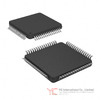
MSC1210Y4PAGT
IC ADC/DAC 24BIT 1K 64TQFP
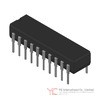
ADC0803LCN
IC ADC 8BIT SAR 20DIP

TPS2211APW
IC PWR SWITCH 3:2 20TSSOP

RT0402DRE0749R9L
RES SMD 49.9 OHM 0.5% 1/16W 0402
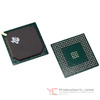
TMS320C6727BZDH275
IC FLOATING POINT DSP 256-BGA
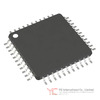
ATMEGA16L-8AC
IC MCU 8BIT 16KB FLASH 44TQFP
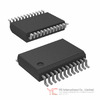
TPIC44L02DB
IC GATE DRVR LOW-SIDE 24SSOP
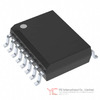
ISO7241CDWR
DGTL ISO 2500VRMS 4CH GP 16SOIC

VI-B60-IV
DC DC CONVERTER 5V 150W

ST90R92C1
ST90R92C1 ST

F2574E-01
F2574E-01 GIOGOPTIX

HD6433834C06EV
RENESAS QFP









































































